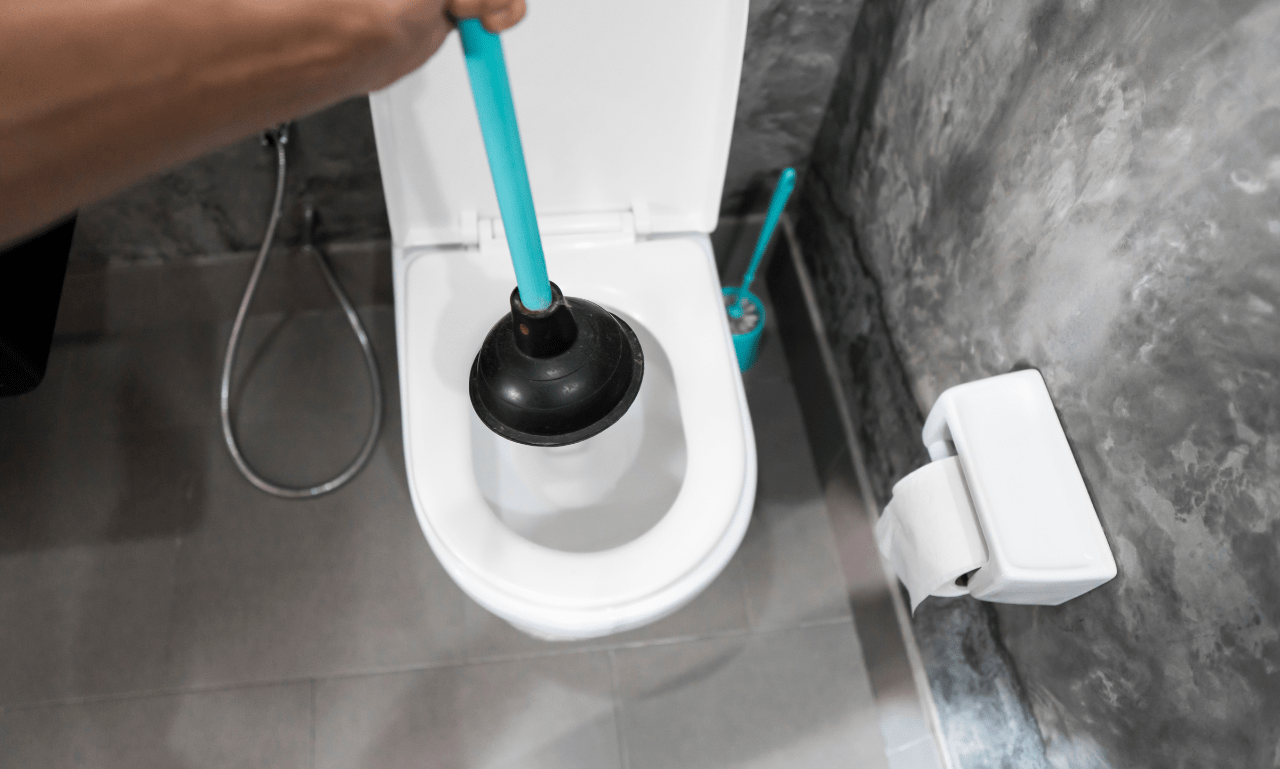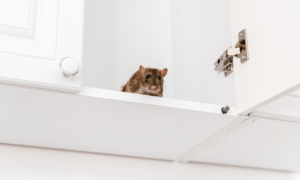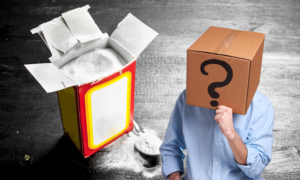Introduction
The Curious Question: Ramen Noodles and Toilets
The idea of flushing ramen noodles down the toilet may have crossed your mind. After all, it’s a convenient way to get rid of leftovers, right? In this article, we’ll delve into this curious question and explore whether it’s a safe and responsible practice. Ramen noodles are a staple in many households, but when it comes to disposal, some myths need debunking.
Why Proper Disposal Matters
Proper disposal is not only about convenience but also about environmental responsibility and maintaining the integrity of your plumbing system. We’ll discuss why it’s crucial to make informed decisions about disposing of food items, including ramen noodles, and how these choices impact your home and the environment.

Ramen Noodles and Plumbing
Understanding the Ramen Noodle Composition
Ramen noodles have become a staple in the diets of many around the world, thanks to their affordability, ease of preparation, and delightful taste. Yet, there’s more to these quick and tasty meals than meets the eye. In this chapter, we’ll dive into the composition of ramen noodles and why it’s vital to understand how they interact with plumbing systems.
The Ramen Noodle Composition
Before we delve into the impact of ramen noodles on plumbing, let’s break down their composition:
- Wheat Flour: The primary ingredient in ramen noodles is wheat flour. This flour is milled from wheat grains and provides the noodles with their characteristic texture and structure.
- Water: To bind the wheat flour and create the noodle dough, water is a fundamental ingredient. The water content can vary slightly among different brands and types of ramen noodles.
- Seasonings: Ramen noodles come in a wide array of flavors, from classic chicken or beef to more exotic varieties like miso or seafood. These seasonings often include salt, flavor enhancers, spices, and dehydrated vegetables.
Now that we’ve outlined the basic composition of ramen noodles let’s explore how these seemingly innocuous ingredients can wreak havoc on your plumbing system.
The Impact on Your Plumbing System
When ramen noodles come into contact with water, they undergo significant changes that can lead to problems within your plumbing system:
- Expanding Size: Ramen noodles have a remarkable ability to absorb water and expand. As they soak up moisture, they can grow significantly in size. This expansion can occur both in the cooking pot and within your pipes.
- Stickiness: The starchy nature of wheat flour in ramen noodles can make them sticky when wet. This stickiness can cause the noodles to adhere to the walls of your plumbing pipes, creating blockages.
- Breaking Down Slowly: Unlike toilet paper, which is designed to break down quickly in water, ramen noodles can take a long time to disintegrate. This slow decomposition can contribute to persistent clogs and pipe damage over time.
- Combined with Other Debris: Ramen noodles flushed down the toilet often mix with other debris such as hair, soap scum, and toilet paper, creating a potent clog cocktail that’s challenging to dislodge.
It’s crucial to be aware of these consequences when considering whether to flush ramen noodles down the toilet or even rinse them down the sink. Avoiding these actions can help you prevent costly plumbing repairs and ensure the smooth operation of your household drainage system.

The Flushing Conundrum
Debunking Common Misconceptions
In our quest to unravel the mysteries surrounding the seemingly innocent act of flushing ramen noodles down the toilet, we encounter a web of misconceptions and urban legends that have perpetuated this practice. In this chapter, we embark on a mission to debunk these myths and shed light on the true consequences of such actions.
Myth 1: Ramen Noodles Are Biodegradable
One common misconception is that ramen noodles are biodegradable and can easily break down in water. While it’s true that ramen noodles are primarily made from wheat flour and water, they are far from being a natural, easily decomposable substance. Ramen noodles often contain additives and preservatives, which can impede their breakdown in water.
When you flush ramen noodles down the toilet, they enter a complex wastewater treatment system designed to break down organic matter. However, the additives in these noodles can disrupt the efficiency of the treatment process. This interference may lead to blockages, increased maintenance costs, and potential harm to the environment.
Myth 2: Flushing Ramen Noodles Is Convenient
Another prevalent belief is that flushing ramen noodles down the toilet is a hassle-free way to dispose of them. Convenience is a tempting factor, especially when you’re faced with a bowl of leftover noodles you’d rather not deal with. However, this convenience is deceptive.
The act of flushing ramen noodles may seem easy in the moment, but it often results in clogs and plumbing issues down the line. These blockages can lead to costly repairs and disruptions in your daily life, which are far from convenient.
Myth 3: Ramen Noodles Break Down Like Toilet Paper
One of the most dangerous myths is the assumption that ramen noodles break down in water just like toilet paper. Toilet paper is specifically designed to disintegrate quickly in water to prevent clogs in plumbing systems. Ramen noodles, on the other hand, lack this crucial characteristic.
When you flush ramen noodles, they can swell and become even more substantial in water. This makes them more likely to get stuck in pipes and contribute to blockages over time. So, while toilet paper is engineered for easy breakdown, ramen noodles are not.
The Flushing Consequences
Now that we’ve debunked these common misconceptions, let’s delve into what actually happens when you flush ramen noodles down the toilet.
The journey from the toilet bowl to your plumbing system can be problematic. When ramen noodles enter your pipes, they can create stubborn clogs, which not only disrupt your plumbing but can also lead to backups and overflows. This not only poses an inconvenience but can result in costly repairs and potential damage to your home.
Moreover, the environmental impact cannot be ignored. When ramen noodles disrupt wastewater treatment systems, it can harm aquatic ecosystems and pollute natural water sources. So, what initially appears as a convenient way to dispose of leftover noodles can have far-reaching consequences that extend beyond your household.

Safe Disposal Alternatives
Eco-Friendly Options for Ramen Noodle Disposal
In the previous chapters of our ramen noodle journey, we’ve delved into the history and cultural significance of this beloved dish, as well as the various health considerations when consuming it. Now, as responsible consumers, it’s essential to explore eco-friendly alternatives for disposing of ramen noodles. These alternatives not only reduce waste but also align with sustainability goals, helping us make a positive impact on our environment. In this chapter, we’ll focus on one of the most eco-friendly methods for ramen noodle disposal: composting.
Composting and Waste Management
Composting is an effective and environmentally friendly way to dispose of organic materials like leftover ramen noodles. Composting not only reduces the burden on landfills but also transforms your kitchen scraps into nutrient-rich soil that can benefit your garden or plants. Here, we’ll provide you with a step-by-step guide on how to incorporate ramen noodles into your composting routine and the environmental benefits it offers.
Step 1: Choose the Right Noodles
Before you start composting your leftover ramen noodles, it’s crucial to ensure they are the right type for composting. Opt for ramen noodles made from organic ingredients and avoid those with excessive preservatives or additives. Organic noodles decompose more easily and provide better-quality compost.
Step 2: Cook with Minimal Oil and Seasonings
When preparing your ramen, try to use as little oil and seasonings as possible. Excessive oil and heavily seasoned noodles can be detrimental to your compost pile, as they may attract pests or hinder the decomposition process. Keep your ramen as simple and natural as possible.
Step 3: Break Down Noodles
Before adding the leftover ramen noodles to your compost pile, break them down into smaller pieces. This will expedite the decomposition process, allowing the noodles to integrate with other organic matter more efficiently.
Step 4: Mix with Other Compostables
To create a balanced compost pile, mix your ramen noodles with other organic materials like fruit and vegetable scraps, coffee grounds, and yard waste. This mixture provides the necessary carbon-to-nitrogen ratio for optimal decomposition.
Step 5: Maintain Proper Composting Conditions
Composting requires specific conditions to thrive. Ensure your compost pile stays moist, but not waterlogged, and regularly turn the pile to aerate it. This promotes the breakdown of organic matter and reduces the likelihood of odors or pests.
Environmental Benefits of Composting Ramen Noodles
Composting your leftover ramen noodles offers several environmental benefits:
- Reduced Landfill Waste: By diverting organic materials from landfills, you help reduce the generation of harmful methane gas, a potent greenhouse gas that contributes to climate change.
- Nutrient-Rich Soil: Composting transforms ramen noodles and other organic matter into nutrient-rich soil, which can be used to enhance the quality of your garden or nourish your houseplants.
- Sustainable Gardening: Using your compost in gardening reduces the need for chemical fertilizers, promoting sustainable and eco-friendly gardening practices.
- Conservation of Resources: Composting conserves valuable resources by recycling organic materials back into the earth, reducing the need for landfill space and minimizing the use of synthetic fertilizers.
Composting is a simple yet effective way to dispose of leftover ramen noodles while contributing to a more sustainable and eco-friendly future. By following these steps and embracing responsible waste management practices, you can enjoy your favorite dish guilt-free, knowing that you’re making a positive impact on our environment. In the next chapter, we’ll explore creative ways to repurpose ramen noodle packaging and containers, further reducing waste in our daily lives. Stay tuned for more eco-conscious tips and tricks!

Risks and Consequences
The Potential Hazards of Flushing Ramen Noodles
Flushing ramen noodles down the toilet might seem like a convenient way to get rid of leftovers, but it can lead to a host of problems that can inconvenience you and harm the environment. In this chapter, we will delve into the risks associated with this improper disposal practice and explore the potential consequences that can arise.
Case Studies and Plumbing Nightmares
To better understand the gravity of the situation, let’s examine some real-life case studies and stories that depict the plumbing nightmares caused by flushing ramen noodles.
1. Clogs Galore
One of the most immediate and frustrating consequences of flushing ramen noodles down the toilet is the creation of clogs. The starchy noodles can easily become entangled with other debris in your plumbing system, forming stubborn blockages that impede the flow of water. These clogs can lead to slow drains, toilets that won’t flush properly, and in severe cases, even sewage backups into your home.
2. Damage to Sewer Systems
Beyond your own plumbing woes, the impact of flushing ramen noodles extends to the broader sewer system. When noodles accumulate and create blockages in your home’s pipes, they can also accumulate in municipal sewer lines. This buildup can result in costly repairs for your local government and potentially lead to sewer overflows, which can be detrimental to the environment. Sewage overflows can contaminate waterways, harm aquatic life, and pose health risks to humans.
3. Environmental Pollution
Flushing ramen noodles is not only bad for your plumbing but also for the environment. The chemicals and preservatives present in instant ramen can leach into the water supply when flushed down the toilet. This pollution can harm aquatic ecosystems and even find its way back into our drinking water, potentially posing health risks for humans.
4. Increased Maintenance Costs
In addition to the environmental and health concerns, flushing ramen noodles can result in substantial financial costs. The plumbing repairs needed to address clogs and blockages can be expensive, and you may also find yourself dealing with increased water bills due to inefficient flushes and leaks.
5. Frustration and Inconvenience
Last but not least, the frustration and inconvenience caused by flushing ramen noodles cannot be overstated. Having to deal with clogged toilets and drains can disrupt your daily life, leading to unnecessary stress and inconvenience.
These case studies and plumbing nightmares serve as stark reminders of the risks and consequences associated with improper disposal practices. It is clear that flushing ramen noodles down the toilet is not just a harmless act but a choice that can have far-reaching and detrimental effects on your plumbing, the environment, and your finances. In the next chapter, we will explore eco-friendly alternatives for disposing of ramen noodles responsibly, mitigating these risks, and contributing to a healthier planet.
Conclusion
The Final Verdict: Ramen Noodles and Toilets
In conclusion, flushing ramen noodles down the toilet is not a recommended practice. While it may seem convenient, it can lead to plumbing issues, environmental concerns, and unnecessary expenses. Responsible disposal methods, such as composting, offer a more eco-friendly and safe alternative.
Responsible Disposal for a Trouble-Free Home
Ensuring that you dispose of ramen noodles and other food items responsibly contributes to a trouble-free home and a healthier environment. By making informed choices about disposal, you can avoid plumbing headaches and do your part in preserving the integrity of our water systems.
If you’re looking for more tips on home care and maintenance, don’t miss our article on Revitalize Your Bed Sheets: How to Freshen Them Without Washing.















